 1
Issue 1
1
Issue 1
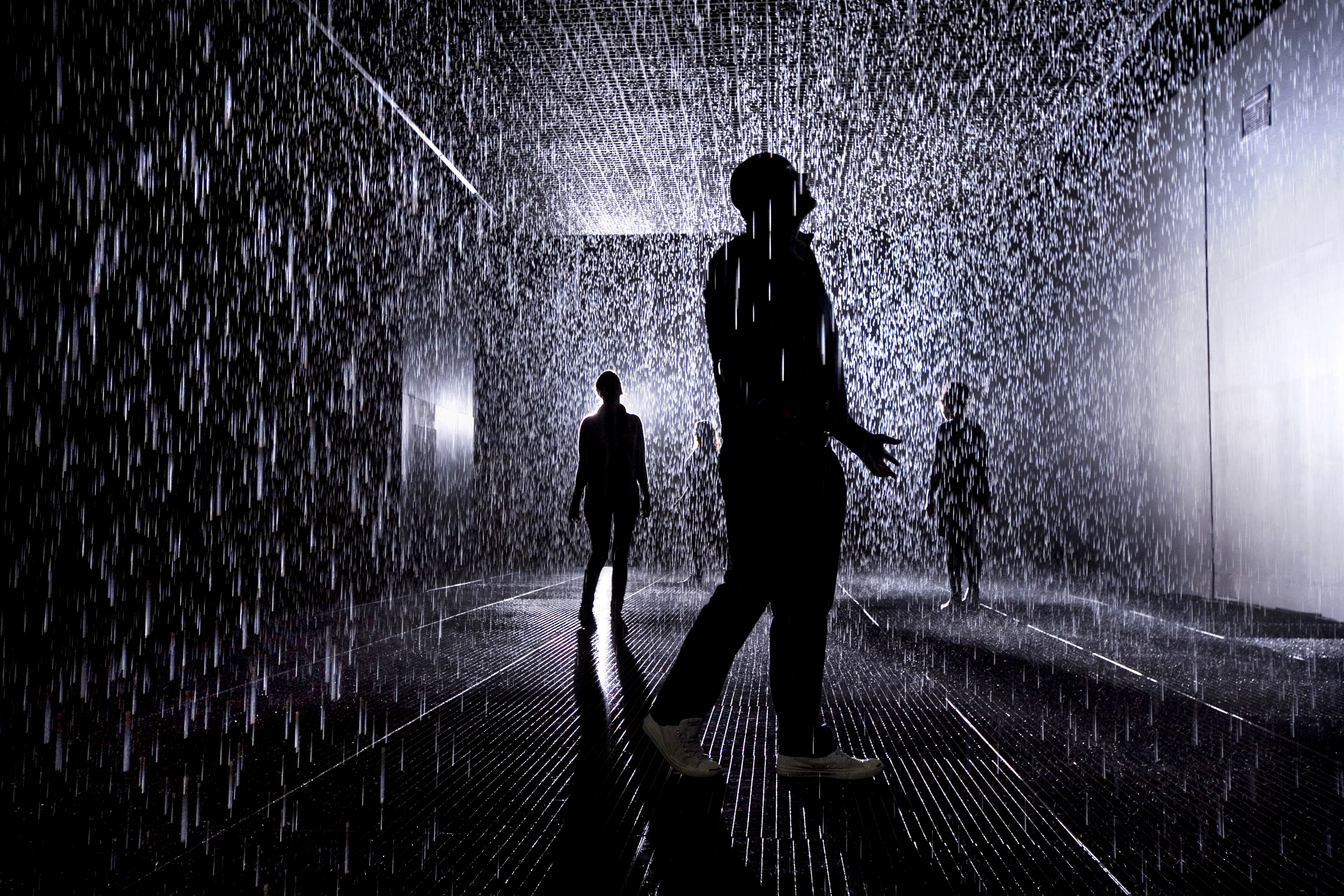
Rain Room, rAndom International, 2012, © Felix Clay. Courtesy of the Barbican Art Gallery.
Rain Room: a field of falling water
Rain Room is rAndom International’s latest installation, immersive and yet programmed to give visitors a new relationship with nature.
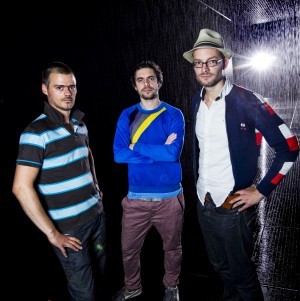
Hannes Koch, Stuart Wood and Florian Ortrass (left to right), co-founders of rAndom International, in front of Rain Room, Barbican Art Gallery, © Felix Clay. Courtesy of Barbican Art Gallery.
Water is the driving force of all nature, as Leonardo da Vinci maintained – and today, unlike ever before, it is at once a degraded resource and beyond the pale of manipulation. In a staged simulation of the natural, rAndom International’s Rain Room, their latest digitally enabled installation in the Barbican Centre’s Curve Gallery (Barbican Art Gallery, 4 October 2012-28 February 2013), and a major component of EXPO 1: New York, Museum of Modern Art PS1, 12 May-28 July 2013) is also their largest, a 100 m2 of falling water visitors walk through and experience trying to control. By playing with possibilities of human intervention and adaptation of falling water, Rain Room also lets the significance of the digital facilitation of the work fall away, leaving visitors free to explore via their personal trajectories through the installation the roles their own ingenuity might play in stabilizing the natural environment.
Immersive and yet supernaturally programmed, Rain Room pushes people outside their comfort zones, ‘extracting their base auto-responses’, as Random co-founders Hannes Koch, Florian Ortrass and Stuart Wood put it. Another manifestation of their drive to experiment with ‘this world of barely perceptible behaviour and its simulation, desirous to know just how will these unpredictable outcomes will manifest themselves.
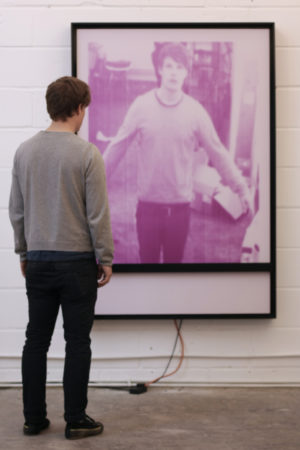
Temporary Printing Machine, rAndom International, 2011. © Random International. Courtesy Barbican Art Gallery.
Rain Room is part of a provocative and unsettling body of work by rAndom International created over the last few years since they set up in 2005, drawn together by a common purpose as students at the Royal College of Art. The influences of op art, kinetics and post-minimalism are mixed with their impulses to experiment with digital technologies, nature and human behaviour.
Swarm, a light work (2010) emulated the behaviour of birds in flight, with the sound created by the presence of visitors causing individual light sources to respond in swarm-like formations.
Audience (2008/9), their first installation with public participation, featured motorized mirrors responding with synchronized movements in response to human activity in their midst, while Swarm, a light work (2010) emulated the behaviour of birds in flight, with the sound created by the presence of visitors causing individual light sources to respond in swarm-like formations. The Temporary Printing Machine (2011) depicted the viewer in a transient light portrait, and Future Self, a new commission by MADE Berlin (2012), where today they have an outpost, along with their London studio, explores the direct interaction of the viewer with the full body images of the self represented by light in three dimensions.
Lucy Bullivant
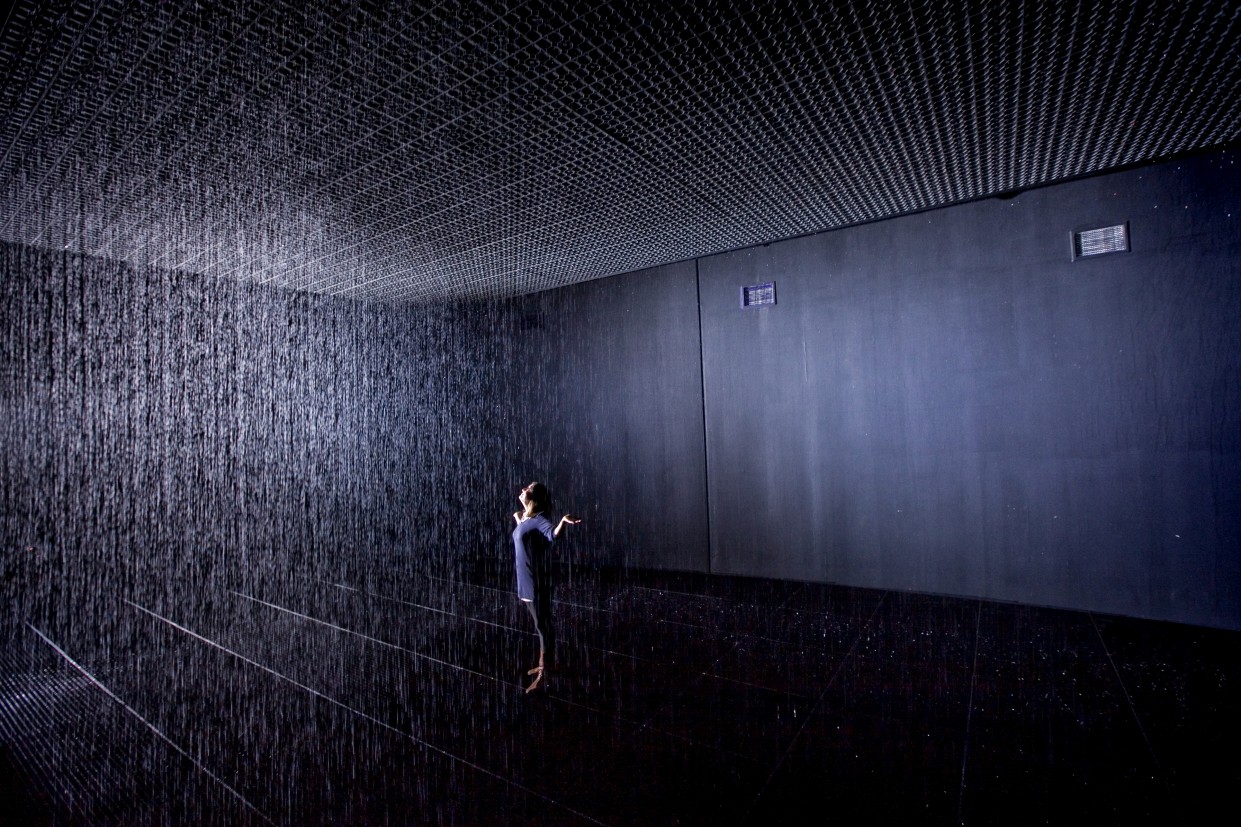
Rain Room, rAndom International, 2012, © Felix Clay. Courtesy of the Barbican Art Gallery.
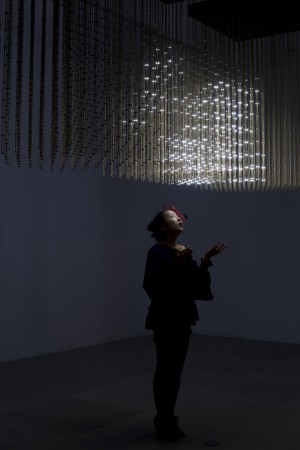
Swarm Light, rAndom International, 2010, edition of 8, Carpenters Workshop Gallery, © James Harris. Courtesy Barbican Art Gallery.
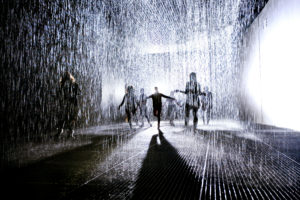
Rain Room, rAndom International, 2012, © Felix Clay. Courtesy of the Barbican Art Gallery.
The Rain Room uses sensors to create an interactive piece of art. Water drops from the celling, creating the effect that it is raining indoors. At first when I was told that I was supposed to walk through it, I thought that the designers rAndom International were joking, but as I approached the wall of water it started to part and I walked into the rain without a drop falling on me. When I carried on walking through the rain started again behind me. I was surrounded by rain without getting wet! After a while I forgot about this danger and enjoyed the beauty of the rain, noticing how drops of light bounced off each drop and how rainbows were rapidly forming all around me. The rain reminded me of the classic cartoon scene where a rain cloud follows a sad person. The Rain Room however is the complete opposite: here a person is followed by clear sky.
As I watched other people walk through the exhibition I noticed that when too many of them went into the design could sometimes fail and a couple of drops landed on a person.
As I watched other people walk through the exhibition I noticed that when too many of them went into the design could sometimes fail and a couple of drops landed on a person. Some people, when drops of rain hit them, carried on walking slowly and the room adjusted again and averted the person from getting soaked. But if they over reacted and started to run it got worse and they got soaked before they could get out. This goes to show that if you stay calm in a crisis, it gets solved quicker than when you over react.
Ben Bullivant-Norris